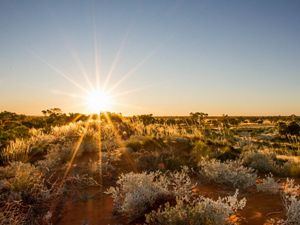From one COP to another: we need to put nature at the centre of the fights against climate change and biodiversity loss
While the Conference on Climate Change (COP27) ended last week in Sharm el-Sheikh, Egypt, another COP (Conference on Biodiversity - COP15), opened this week in Montreal, Canada.
Having both conferences so close to each other in time owes to the chaos the pandemic created for international agendas, but it also illustrates how closely linked climate change and biodiversity are. These crises are intertwined, they share root causes and can contribute to each other. And while the solutions to address them are multi-layered and complex, they share a fundamental one: nature.
We need to support nature to do its job
The air we breathe, the food we eat, the water we drink, the world we live in depends on the interactions of millions of organisms in diverse ecosystems, our planet’s biodiversity.
Our dependency on nature is also economic: In 2017, a report by Swiss Re highlighted the importance of biodiversity and ecosystem services such as water quality, pollination, nutrient cycling, for the global economy. Seagrass ecosystems for example, through nutrient cycling, provide an estimated USD 1.9 trillion in ecosystem services globally. The same report estimates that a third of Australia’s GDP relies on biodiversity and ecosystem services.
These crucial ecosystem services include coastal protection and carbon storage, the ability for certain ecosystems to capture carbon from the atmosphere and store it in their soil. Coastal wetlands, such as mangroves, saltmarshes and seagrass meadows, can absorb and store carbon at a greater rate than forests and grasslands. If undisturbed, they are the only ecosystem that can continuously store carbon in soil for millennia.
Research shows that climate change solutions provided by nature, known as natural climate solutions, can contribute to up to a third of the reduction in emissions needed to fight climate change. In conjunction with a commitment to net zero and the end of unsustainable practices, natural climate solutions are powerful ally in the fight against climate change. In short, protecting and supporting nature contributes to the fight against climate change.
This is why reaching a global commitment to protecting 30% of our lands and 30% of our oceans by 2030 at COP15 is so important. Australia, with a recent commitment to 30x30 by the Federal Government, and a tradition of innovation in effective protection mechanisms ranging from national parks to private protected areas and Indigenous protected areas, has a leading role to play in this discussion.
We need a commitment to finance nature-based solutions
Finally, if we want to be successful in addressing both climate change and biodiversity loss, we need to mobilise financial resources quickly to scale up conservation and protection measures.
The Financing Nature report, co-written by The Nature Conservancy, says that a nature-positive road to 2030 requires that we close the $700-billion-plus global financing gap now. This can only be achieved through a collaborative approach in which governments, corporates, not-for-profits, philanthropists, financial institutions, communities and academics all have a role to play.
From one COP to another, the message is simple: we need a clear nature-positive framework for the Convention on biological diversity, one that will acknowledge the importance of nature for all forms of life on the planet and the key role nature plays in fighting climate change, but also one that fully engages corporations and the financial sector to back the success of our conservation efforts.
Alison Rowe is the Managing Director of The Nature Conservancy Australia



